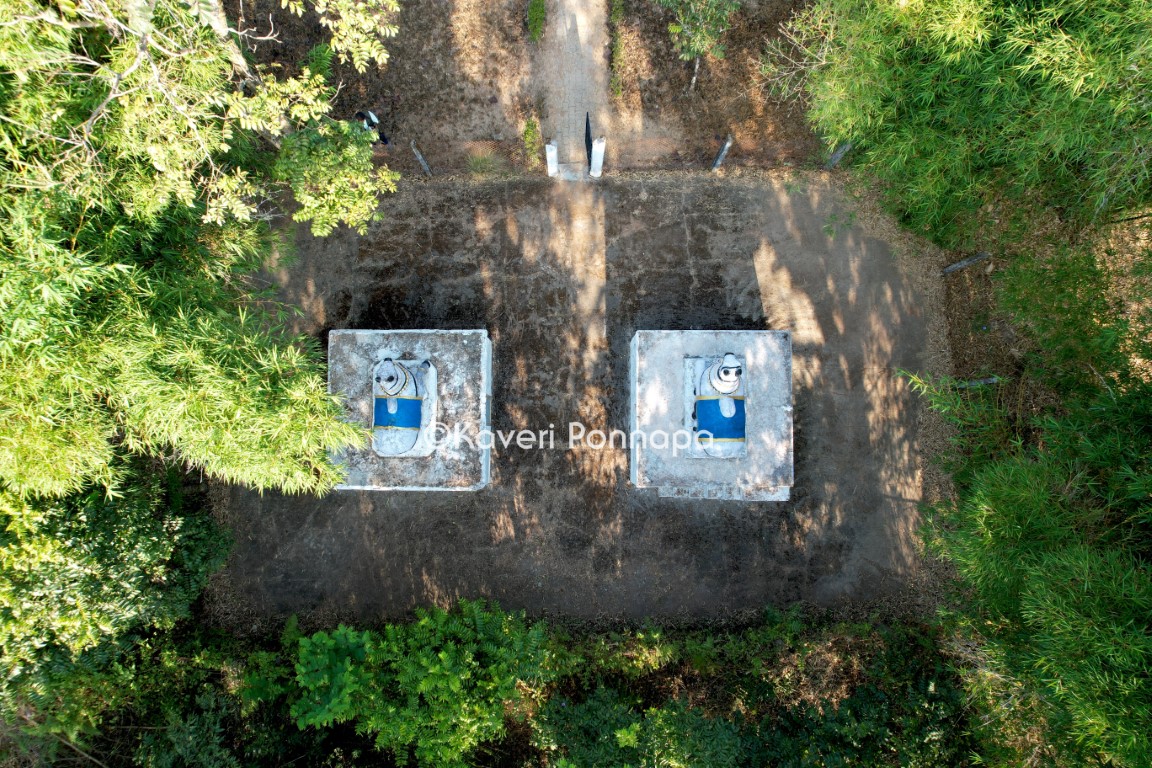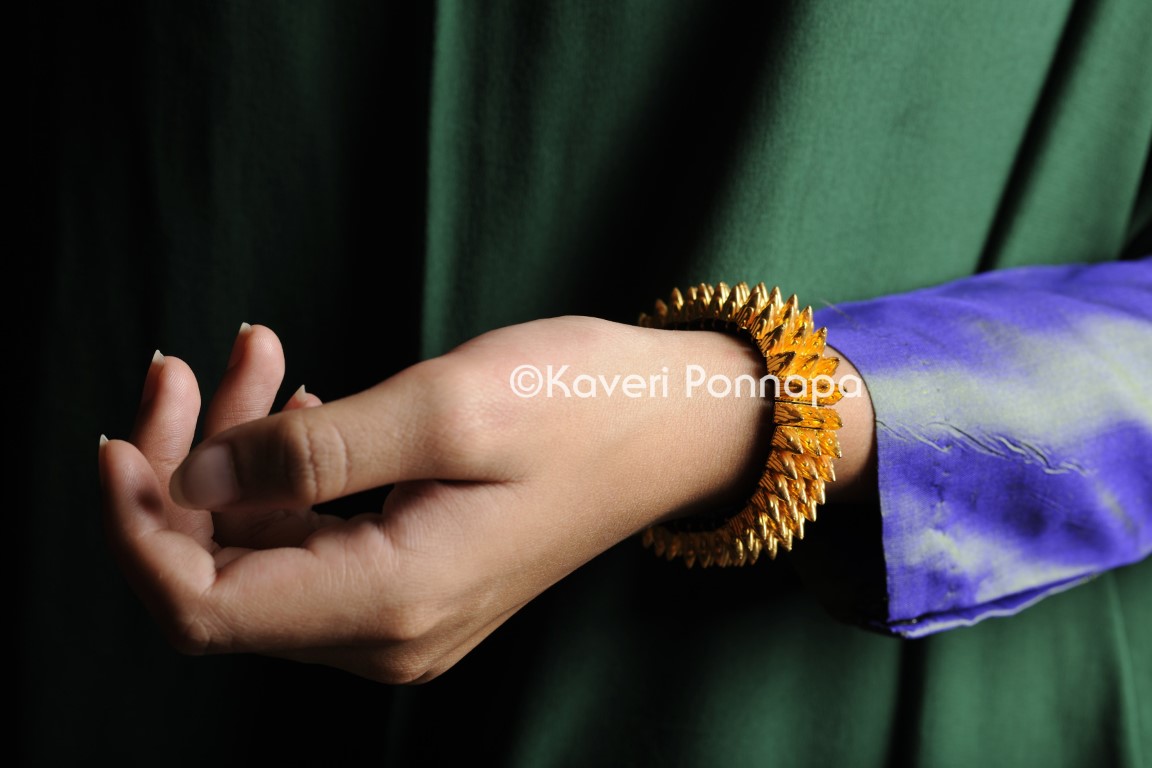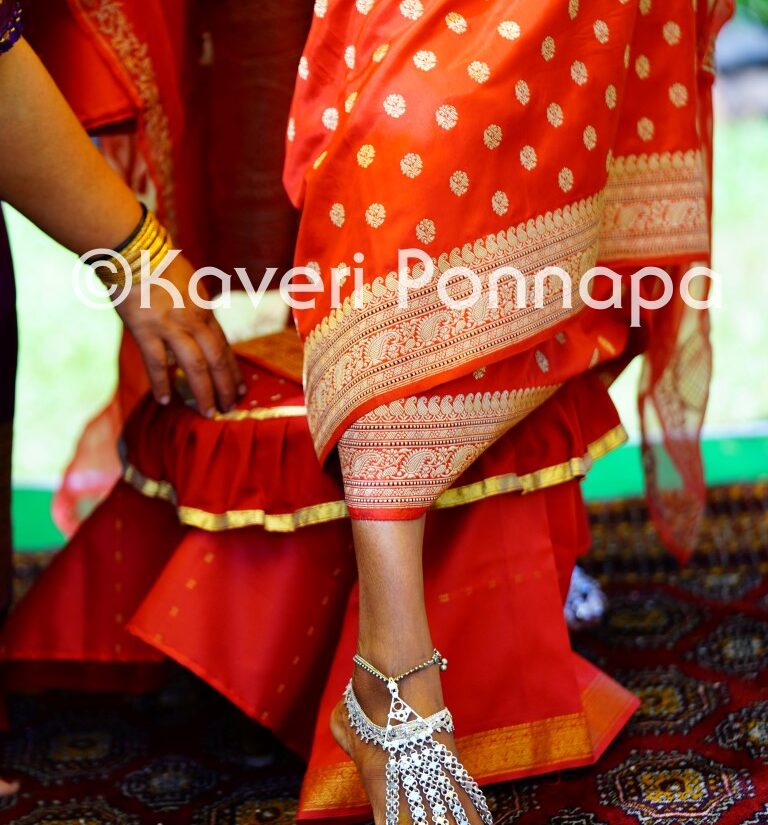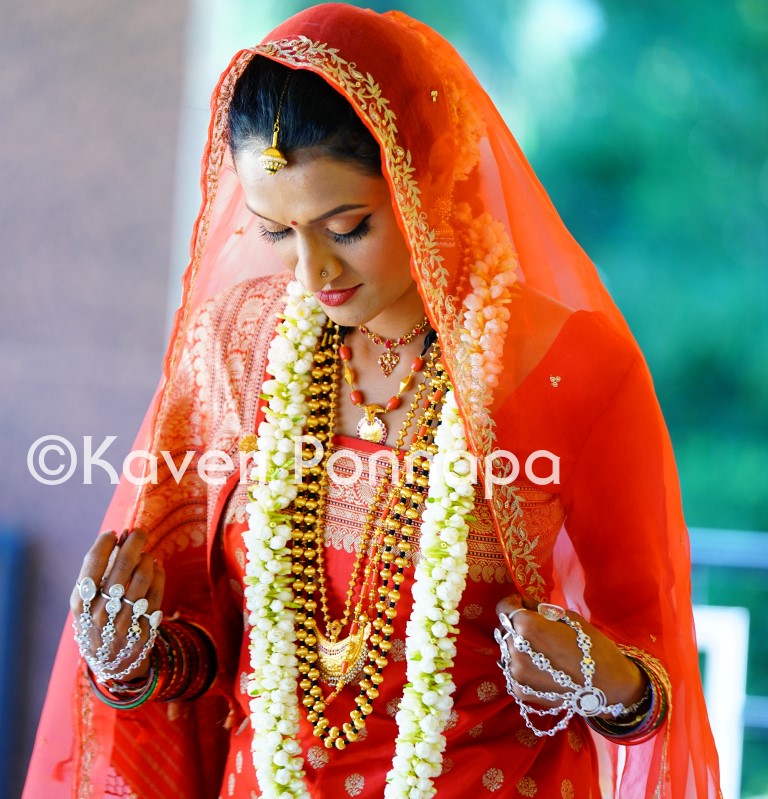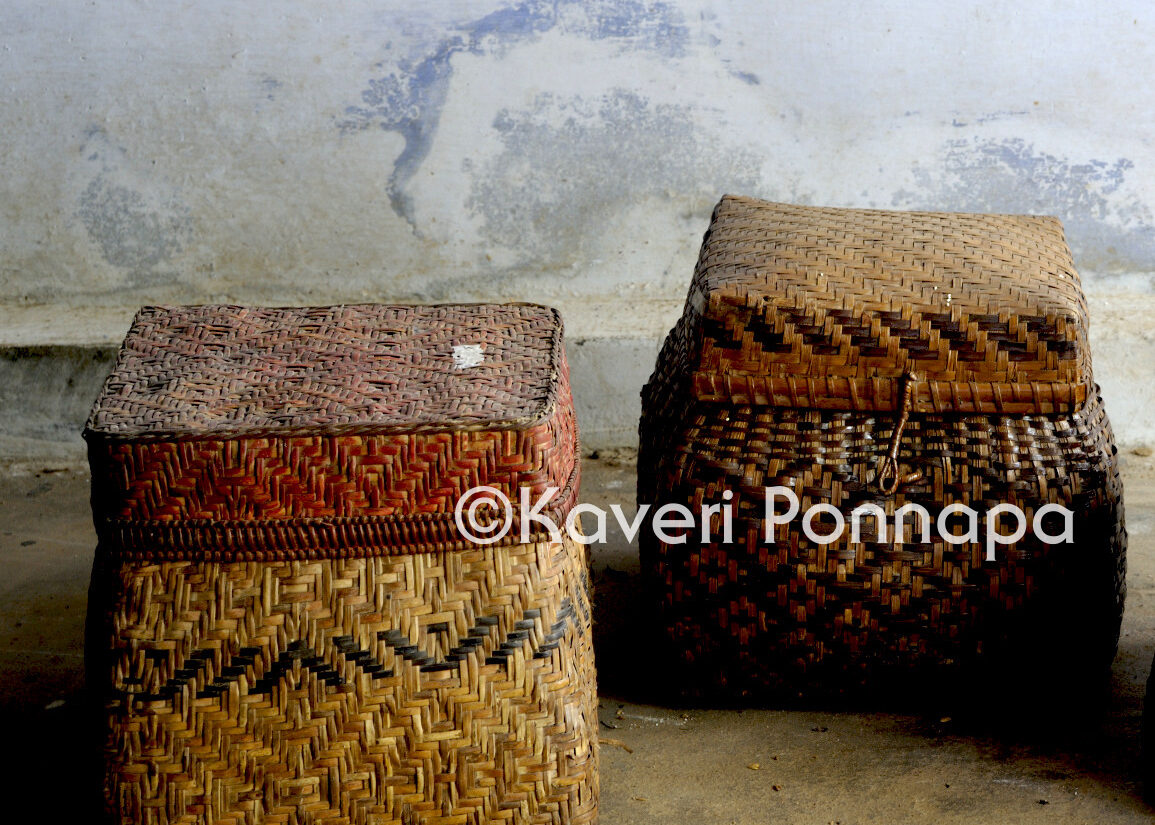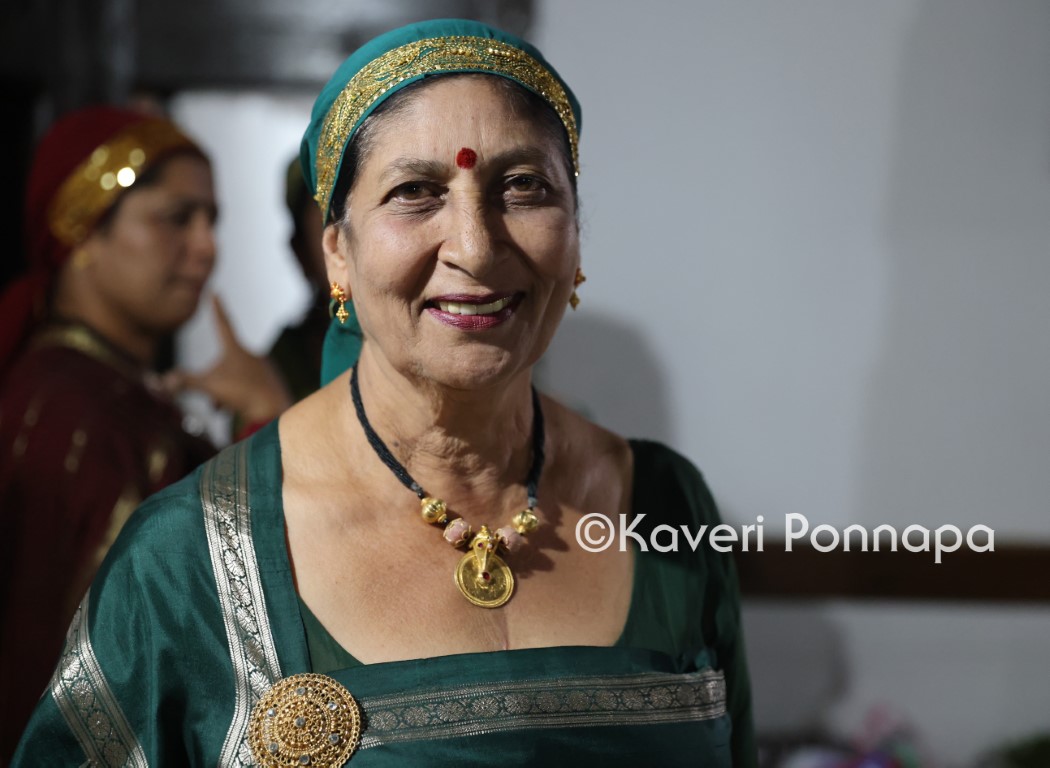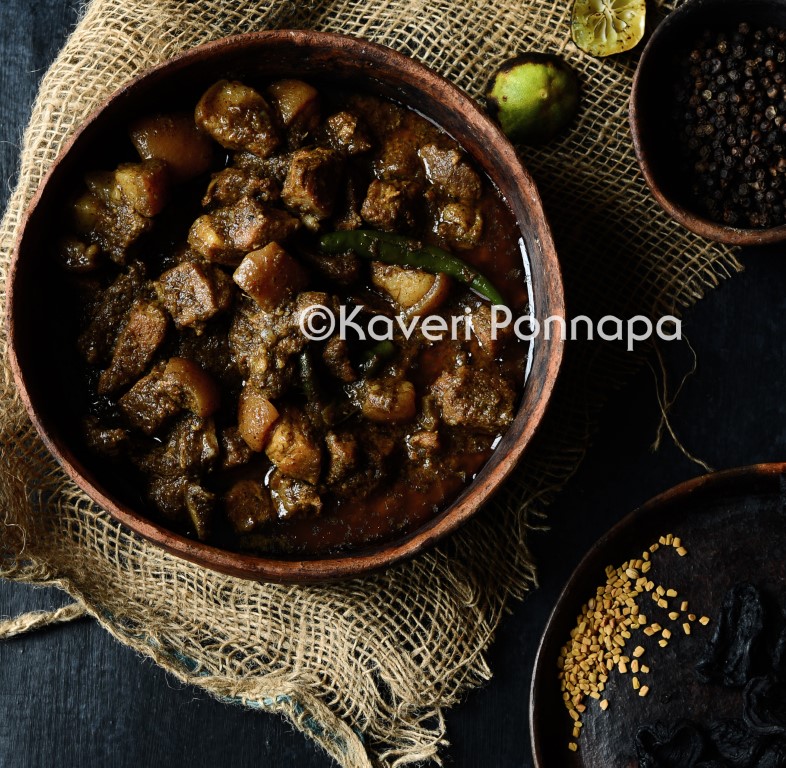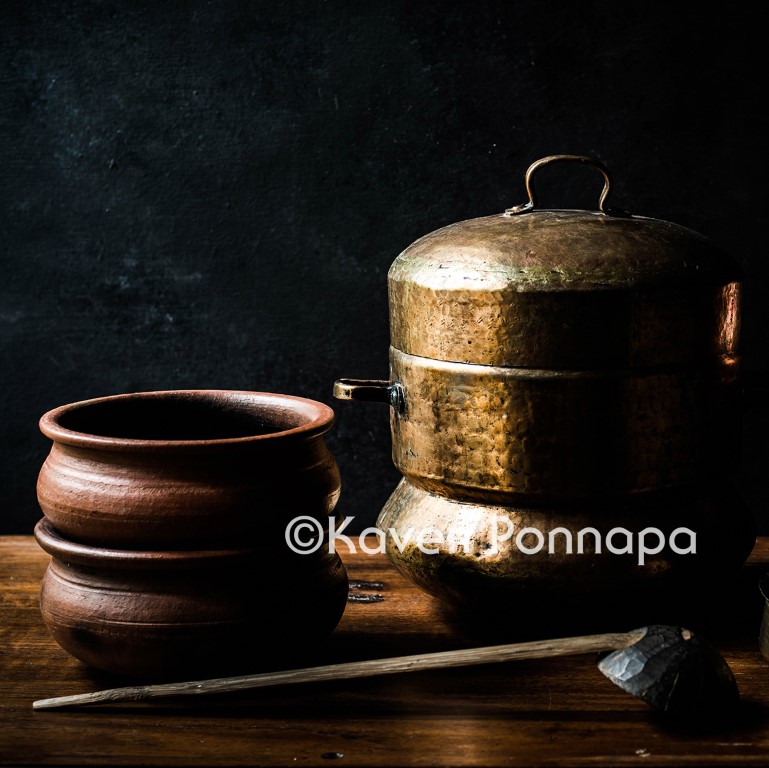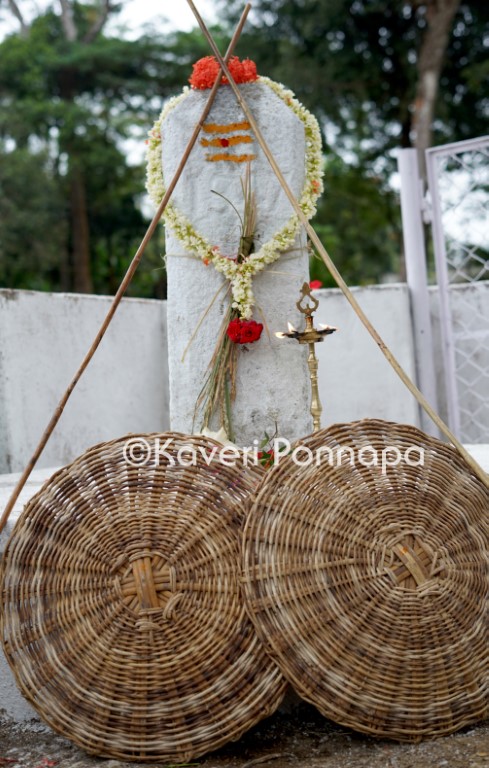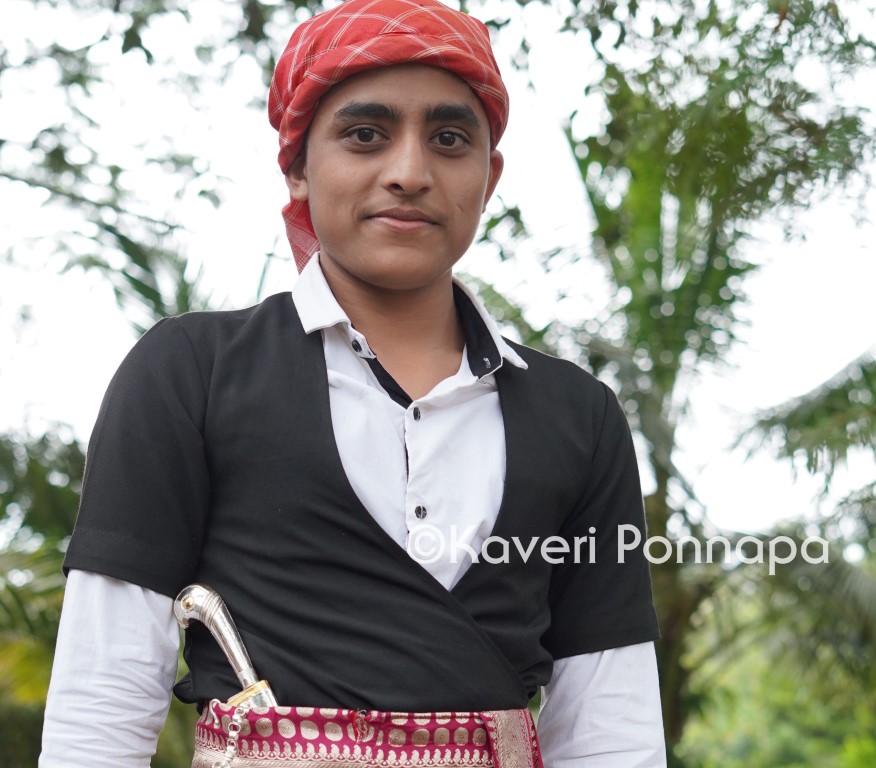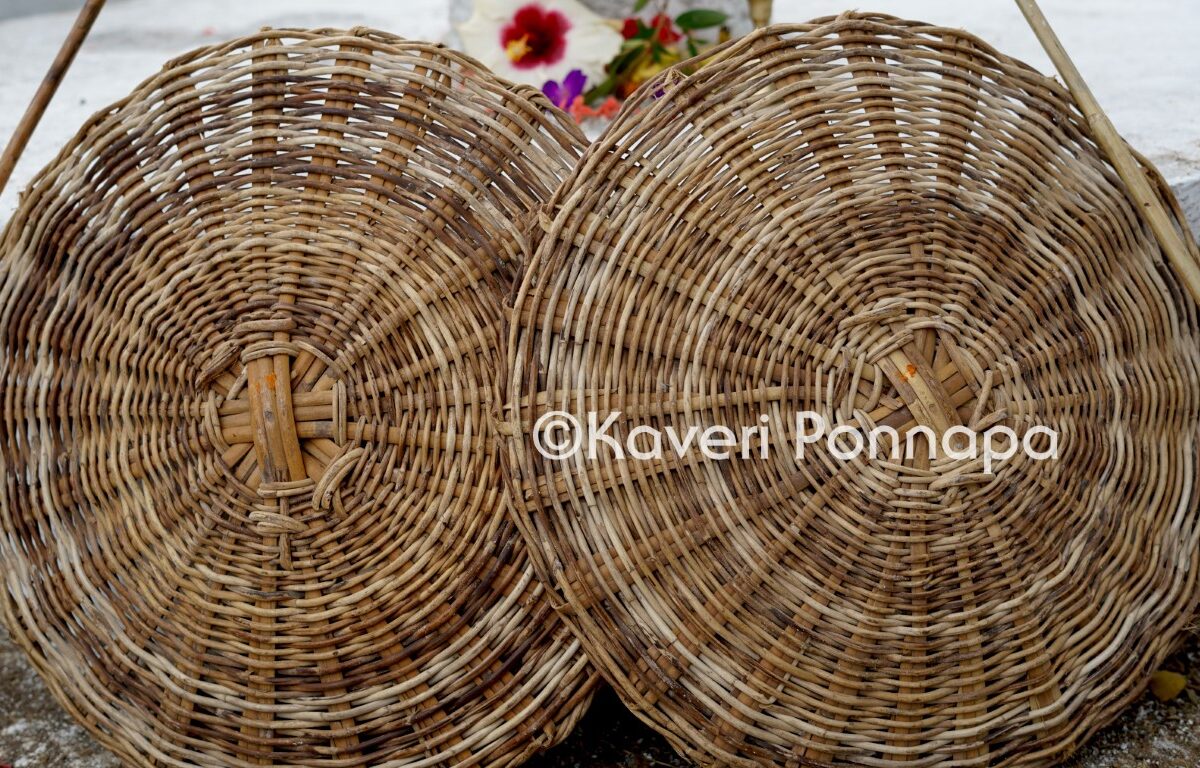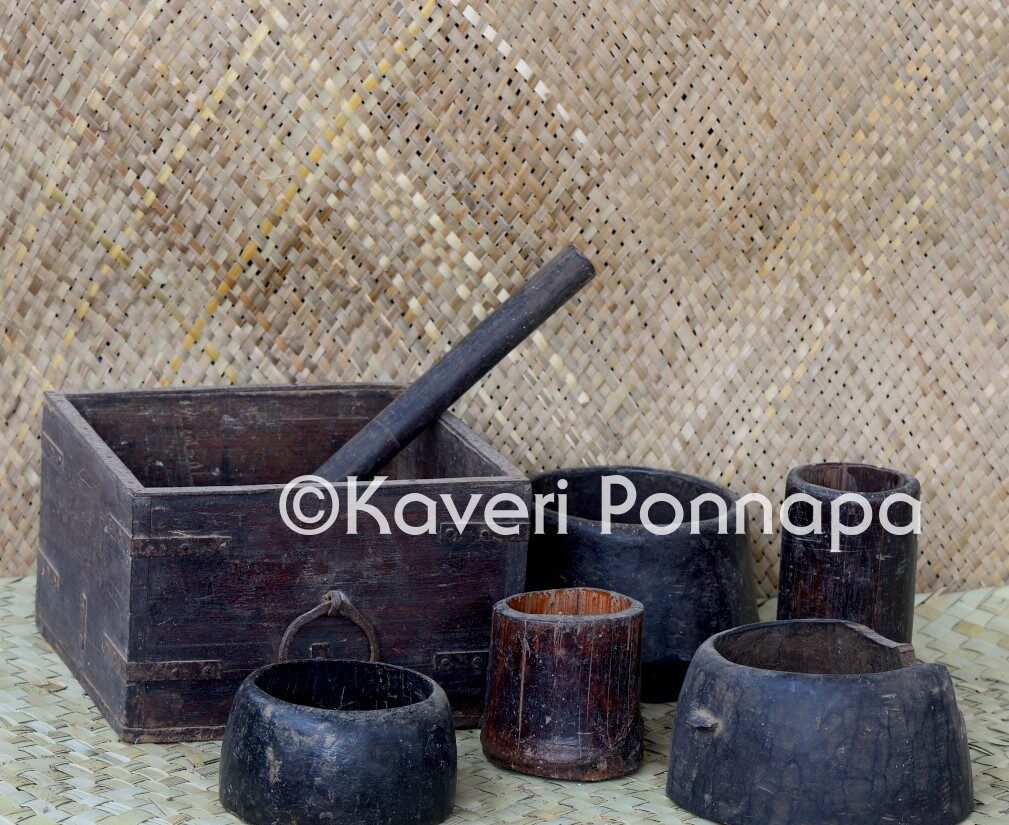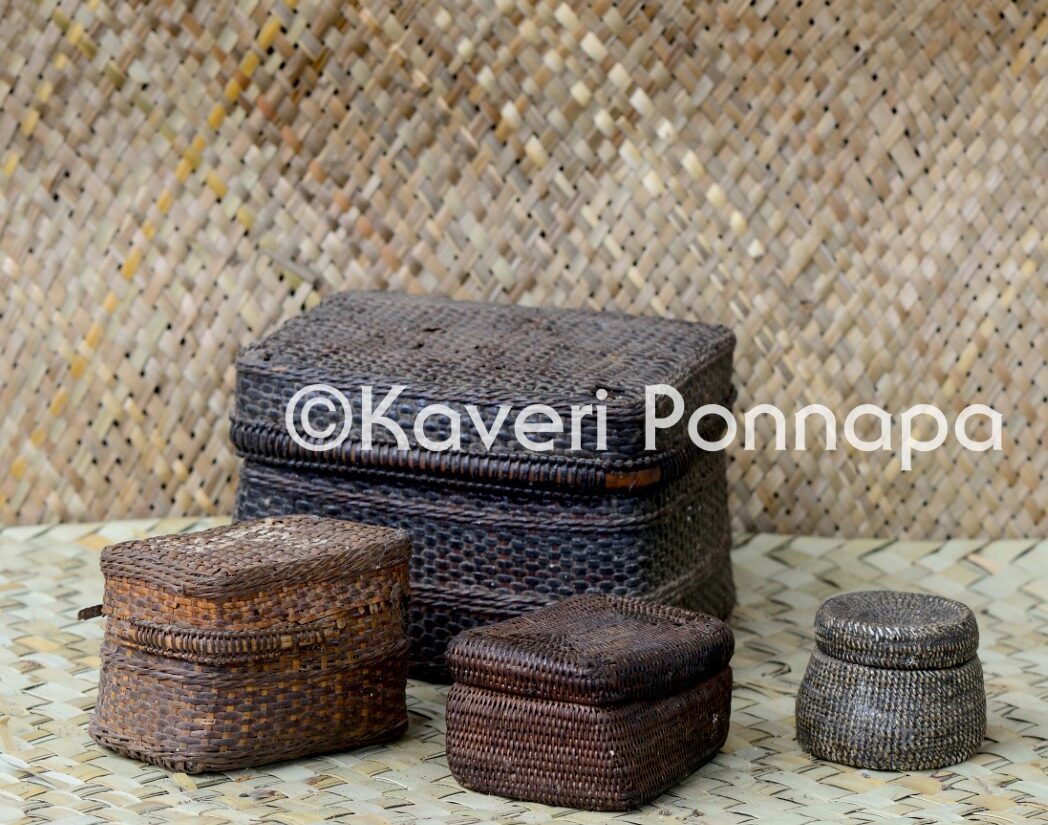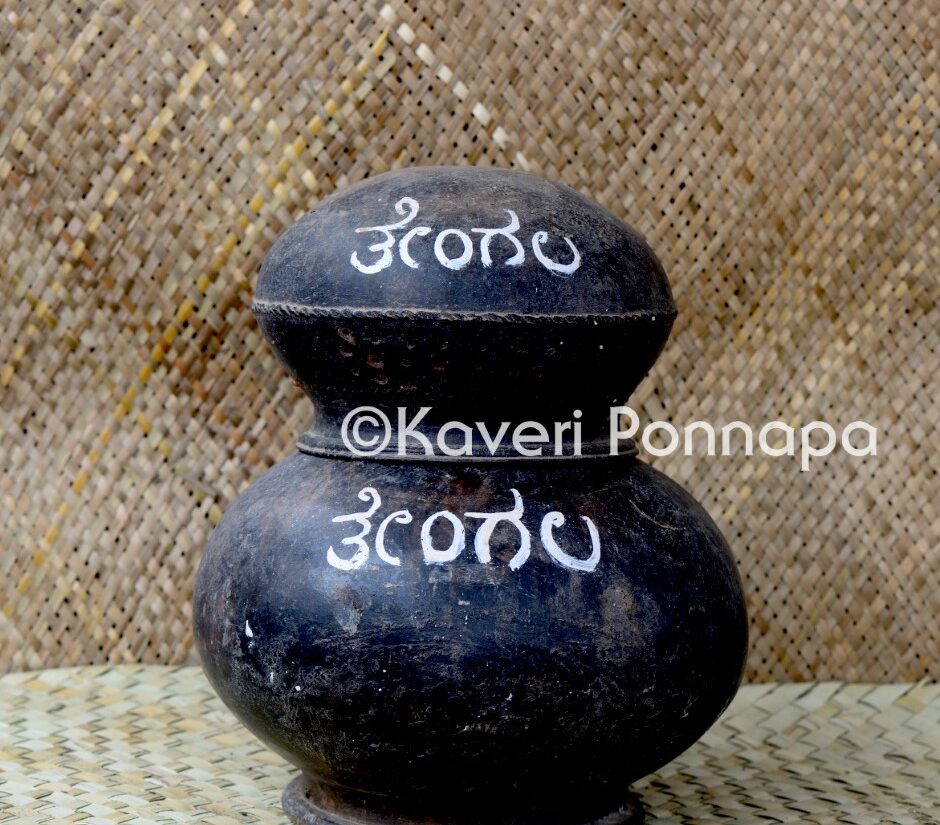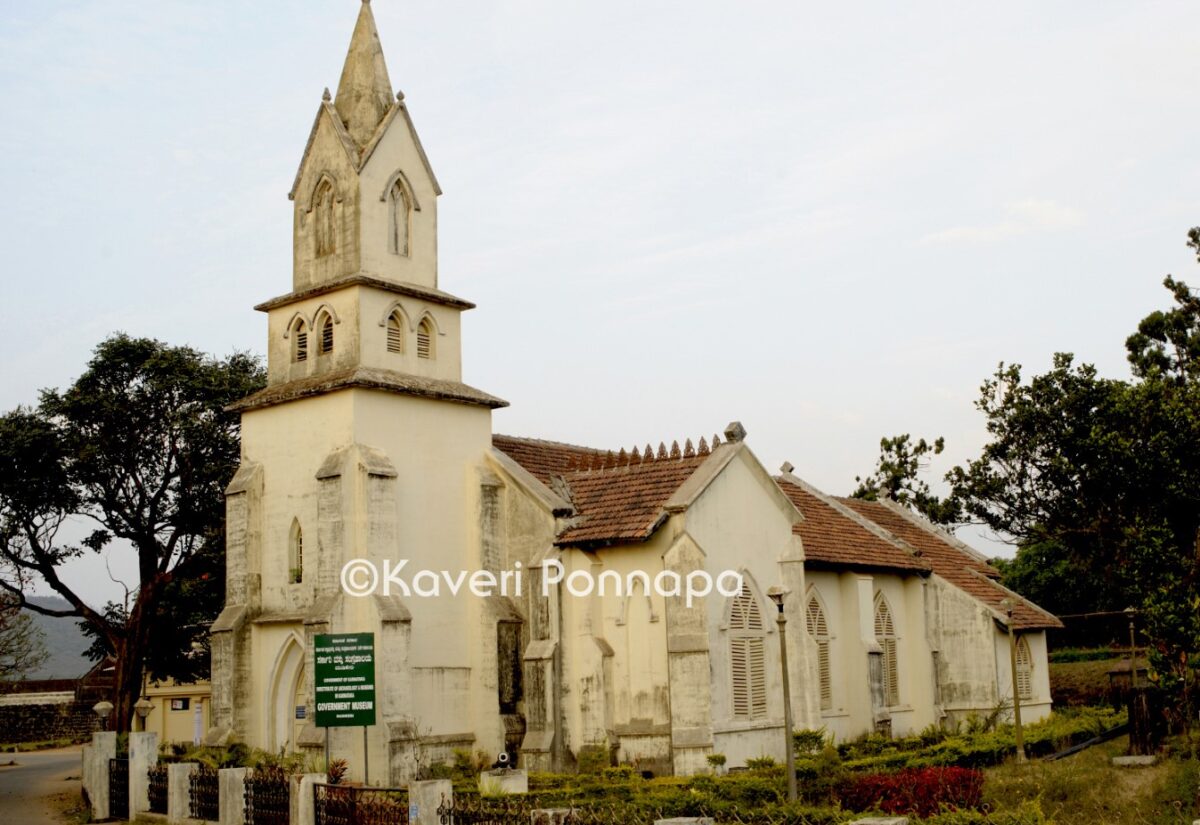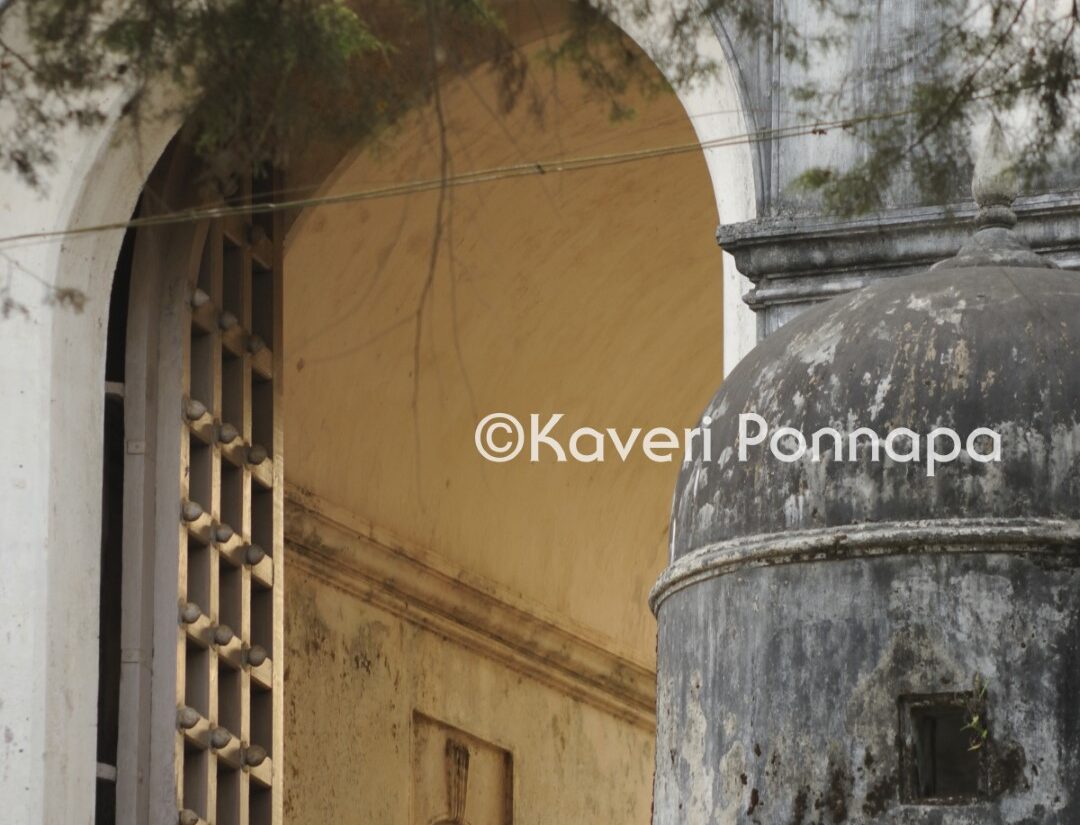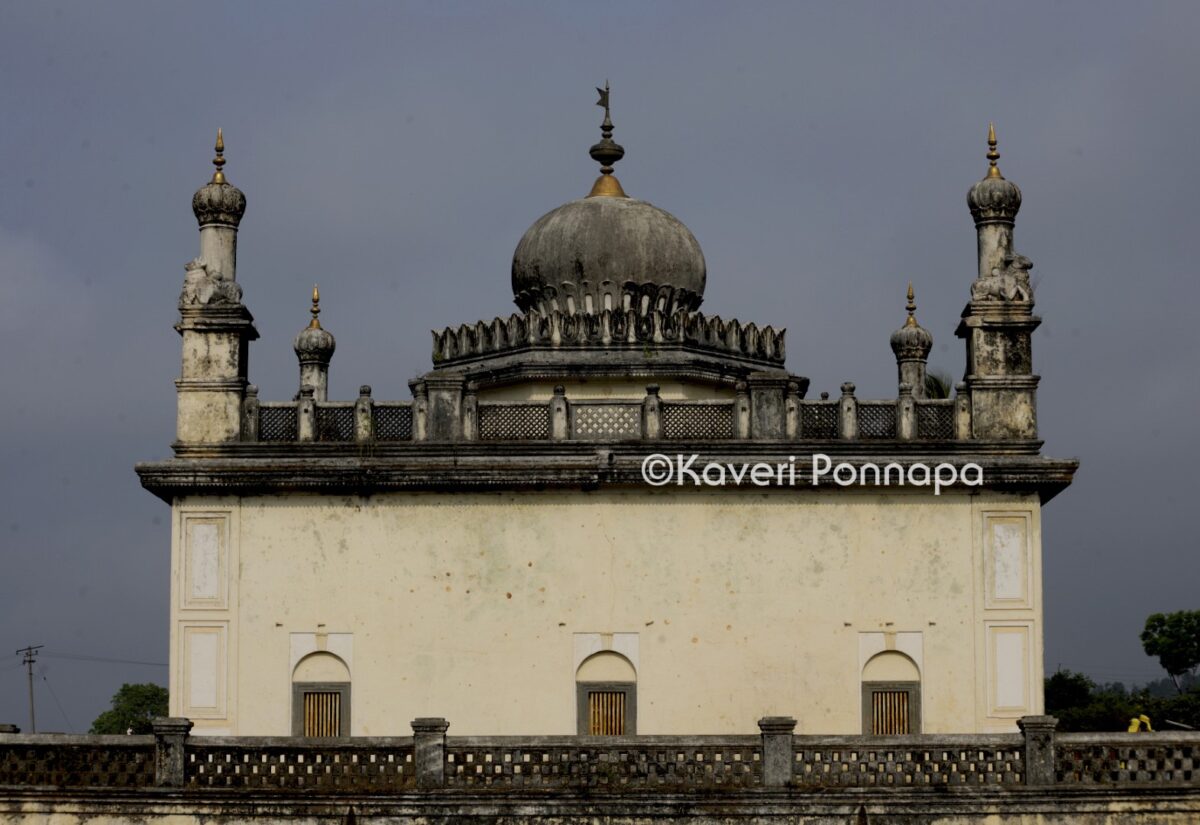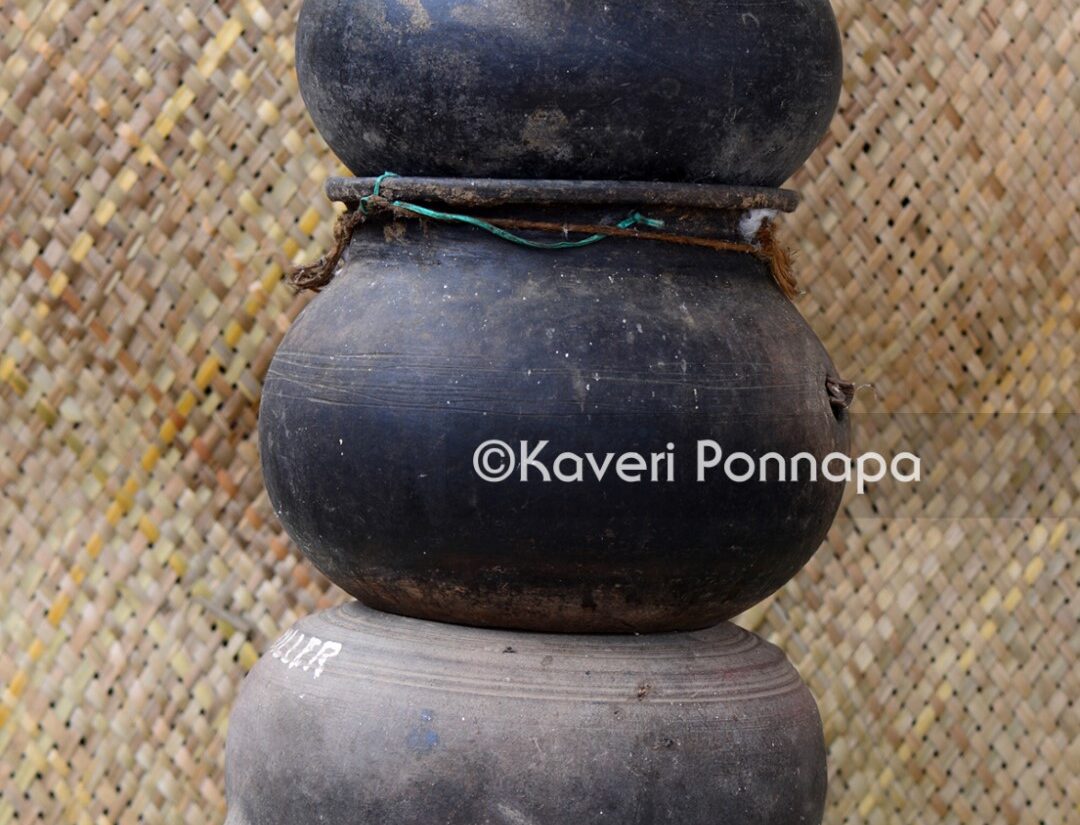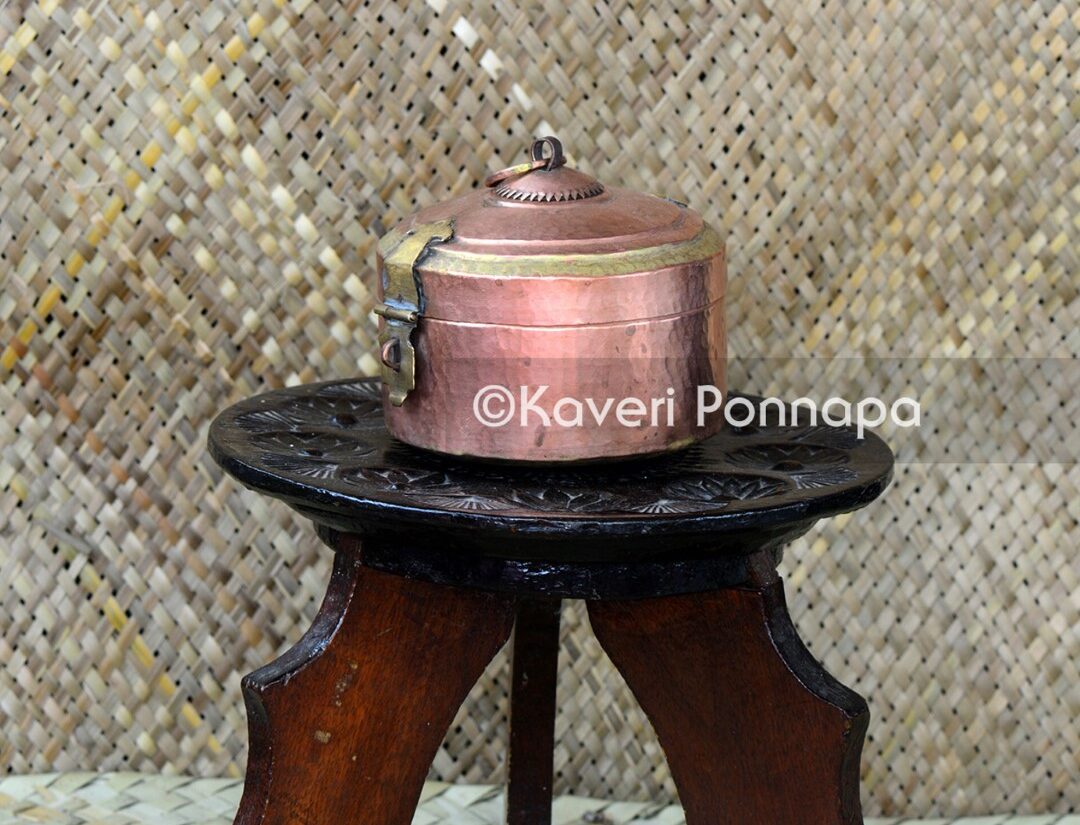The funerary complex of the Lingayat Rajahs of Kodagu located at the hilltop north of Madikeri town also houses the final resting place of two...
A flexible gold bracelet strung on black cord with a screw attachment at the clasp, the paunchi is yet another instance of the organic shapes...
The Jomale or Jomaale, a double strand of grooved, lac-filled gold beads resembling the Indian gooseberry, strung on black cord, is an essential part of...
Kasara or Kaasara ( also referred to as Kaalpilli ), worn on the feet by a Kodavathi bride on the murtha day consists of five...
Silver ornaments which are part of the Kodavathi bride’s jewellery include the kaisara ( also referred to as kaipilli ), an assemblage of rings for every...
Poliya is a lidded basket made of woven cane (toore). It has a specific use at a Kodava wedding ceremony, where it is filled with...
The Kodava pathak (from padakkam) is an ornament worn by women that symbolizes their married status. It consists of a gold coin surmounted with a...
Pandi curry is an emblematic, celebratory dish, cooked on every special social occasion in Kodagu. A throwback to hunting days, when wild boar was plentiful,...
The cuisine of Coorg evolved over the centuries, drawn from the generosity of the fertile landscape – tender wild greens, ferns, bamboo shoots, mushrooms, colocasia;...
These two very young participants in pariyakali followed all the rules required of participants in this mock-combat. Formally dressed, they charmed the crowd with their determination...
Mentorship used to play an essential role in Kodava society when it came to young men being introduced or initiated into various social roles. Even...
A stylized mock-combat between two opponents armed with toorae kol, long, flexible canes and woven rattan shields, pariyakali is part of the dances conducted in the...
An assortment of wooden grain measures dating back to different eras. They were used to measure mainly paddy, as it was loaded onto bullock carts...
Boxes made of woven cane in different sizes and shapes were used to store clothes, valuables and jewellery. In the image, the largest box was...
Terracotta pots with small perforations known as thengala were placed in the yard, and a small quantity of eri (beeswax) place inside to attract wild...
The forcible annexation of Kodagu by the British in 1834 CE created a community of Europeans that grew from the officers of the Madras Regiment...
Madikeri Fort, which was established during the reign of Muddu Raja, possibly in or around 1680 CE, when he shifted his capital from Paleri to...
Gaddige, a royal memorial complex built on a hill at the northern limits of Madikeri once enjoyed a sweeping view of the town. Two regal...
Tiered earthenware pots were used to make kachina kall (a clear rice wine distilled from germinated paddy) which was very popular in Kodagu. The tiered...
Mukkali is a low, three-legged wooden stool, used on ceremonial occasions, or when it is necessary to mark status or offer respect. It is used...


